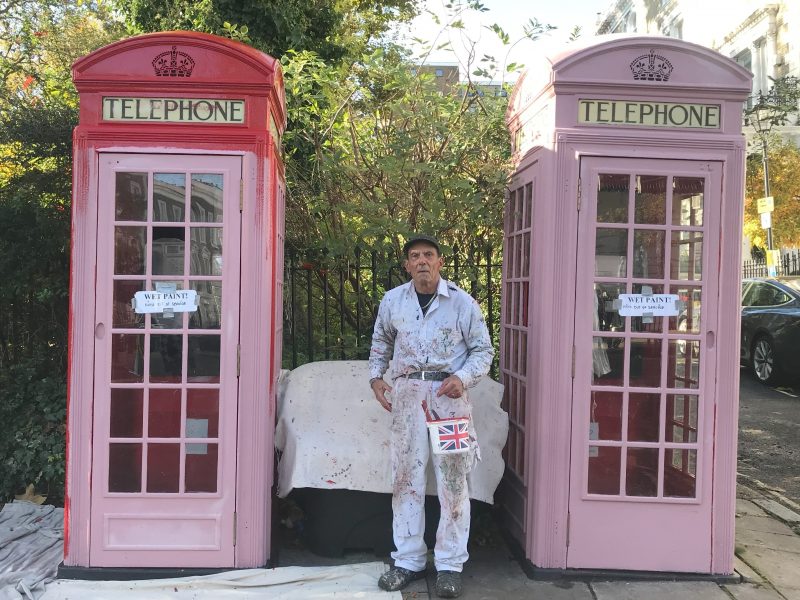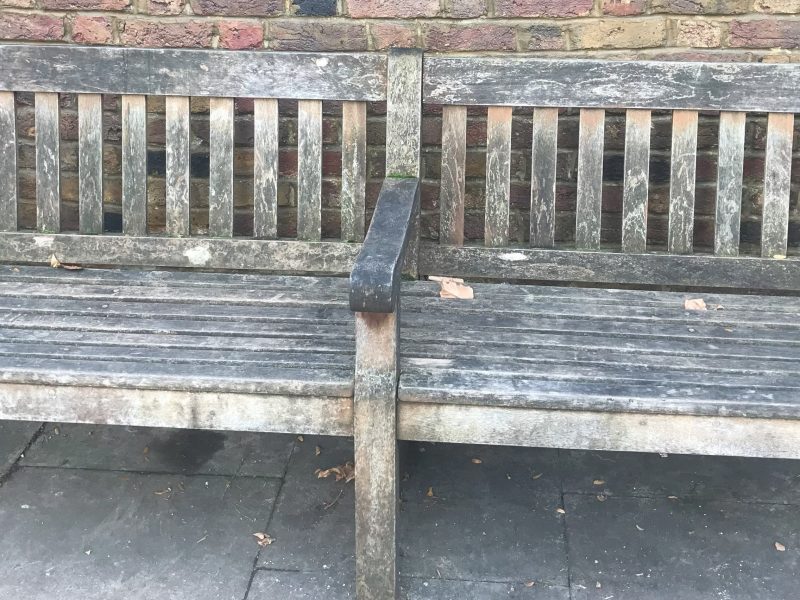We lived at 154 Regent’s Park Road, Primrose Hill. My grandfather had a shop in the terrace that led up to the hill. The front of the shop was boarded up with rough sawn boards salvaged from bomb-damaged houses, and if you were not careful you could get splinters from them.
A small bomb had exploded in the kerb outside the shop and blown out the fronts of both our shop and the hardware shop next door. The owner had evidently come downstairs and looked at his shop in chaos. There were tin-tacks in the broken jar of pickles, soapflakes in the putty and the pails, and kettles full of mothballs. I remember feeling a bit aggrieved that our shop had only a pane of high-level glass, whereas the ironmonger had found quite a big bit of glass to repair his shop window, which allowed him to put up a small window display.
Up and down the main line from Euston, either side of the tracks were bomb sites. Our house was about 300 yards from the railway, and my dad said that the Germans must have been pretty accurate in their bombing to be able to fly so high over their target. Our basement was just one room, made over by St Pancras Borough Council into a shelter, lit only by candles that you took down with you. Workmen had installed sheets of corrugated iron against the ceiling and propped up the roof with steel posts. There was a panel low down in one wall which came away, and behind it was an emergency shaft that took you up to the street via a manhole.
Frankly, I am often amazed at what was accomplished in such a short period of our history, when we were short of both men and materials. Grandpa did not reckon much to the shelter. He said that if a bomb hit the house it would fall down onto the manhole so that you wouldn’t be able to get out anyway.
The Night of the Bomb
On the night the bomb fell, Grandpa was down at Chalk Farm Underground station sheltering there. My mother and I were asleep in one of the upstairs rooms. When the bomb hit, my mother told me she’d lain across my cot to shield me from the blast. Amongst the other damage from the bomb was that it broke the lid of a cut-glass decanter that had been a wedding present to my mum and dad. In spite of everything else that upset my mum, I don’t think she ever forgave the Germans for that!
The bomb chipped great lumps of granite from the kerb and from the base of the iron lamp post. The kerb stones have been replaced, but you can still see the scars on the lamp post. All around the area there were bomb sites. It is odd, isn’t it? In 1946 the word bomb site was common parlance. Now, seventy years later, you hardly hear the word. The bomb sites were the equivalent of today’s adventure playgrounds, all provided courtesy of Herman Göring. The boys who lived closest to the sites claimed them for their own. You sort of had to have their permission to play on them. Camps were established on them and many happy hours spent in play. Health and Safety were unheard of then!
[perfectpullquote align=”full” bordertop=”false” cite=”” link=”” color=”” class=”” size=””]The bomb sites were the equivalent of today’s adventure playgrounds, all provided courtesy of Herman Göring[/perfectpullquote]
The biggest site, reputed to have been blown up by a parachute mine, was between King Henry’s Road and Oppidans Road. A huge area was devastated. We played in the ruins of rubbish-strewn stairs and musty cellars, and chucked bricks into the remains of ornamental ponds that had once been features of cultivated gardens.
Here and there some sites were cleared and cellars turned into emergency water supplies. The walls were coated in thick bitumen and low walls built around the outside from salvaged bricks. A wooden door was set in the wall and the initials ‘EWS’ standing for ‘Emergency Water Supply’ were painted on the door. This gave the fire brigade water when the mains were fractured.
There was a young lad in my class at Princess Road Primary School (now Primrose Hill School) who had the same birthday as me. He was the son of the BBC music conductor Eric Robinson and was called Drury. One day on the way home from school he stopped to play on a bomb site and was killed by some falling masonry.
There were other dangers. A boy, older than me, called Peter Brown, used to walk around for as long as I can remember with his ears bandaged. He was injured whilst playing with a phosphorus bomb that he and two friends had found. The other two lads were killed. Mum always said never to pick up anything we found on Primrose Hill, but of course we did.
Primrose Hill Gun Battery
There had been a gun battery on Primrose Hill. The guns had been removed and ‘squatters’ had moved into the old army huts. Grandpa was a bit wary of ‘squatters’ in case they might pinch things when in his shop, which was typical of the attitude that abounded in those days. Anybody you were not sure about was a dodgy type. But as far as I can recall, most were ordinary folk who had been bombed out of their homes and were victims of the war.
The shelters and ammunition stores around the gun emplacements were a super playground, although you had to be wary of all the barbed wire that was strewn about. Like the bomb sites, they smelt a bit. There was an enormous concrete well in the centre of the site which we always said was the base of a big gun. But in reality I suspect it was for a rangefinder or something like that. Around this centre pit were the remains of the bases for other guns. There may have been four or more. All that remained were the cut-off bolts that had held them in place.
To us kids the pit seemed very deep, but it was probably only about 5 feet deep. It was accessed via a trapdoor and a ladder, and the game was to send someone down into the pit and not let him back up the ladder.
Places on Primrose Hill had been turned into allotments (“Dig for Victory”) and we had one. We knew people who worked at nearby London Zoo and Grandpa could get dung from there for the allotment. Rumour had it that he had elephant dung for his marrows and giraffe dung for his runner beans. The allotments remained there for several years after the war.
Article by David Edwards
See also







